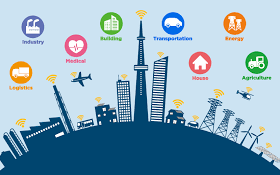Choosing the right one feels overwhelming. often face knowledge gaps about power bank features, operational hurdles like mismatched devices, or misconceptions that all power banks are essentially the same. This article breaks down the main types of power banks—standard, high-capacity, solar, wireless, and laptop-specific—addressing these pain points with clear guidance and a fresh perspective.
What Is a Power Bank and Why Does Type Matter?
A power bank is a portable battery that stores energy to charge devices like smartphones, tablets, or laptops via USB or other ports. Capacity, measured in milliampere-hours (mAh) or watt-hours (Wh), determines how much charge it holds, while output (e.g., 18W or 65W) affects charging speed. Different types of power banks cater to specific needs—some prioritize portability, others raw power or unique features like solar charging. Choosing the right type ensures you avoid issues like slow charging, excessive bulk, or incompatibility with your devices.
1. Standard Power Banks
Best for: Everyday use, light to moderate users (commuters, students, casual users).
Standard power banks, typically 5,000-10,000 mAh, are compact, lightweight (4-8 ounces), and budget-friendly ($15-30). They’re ideal for charging a smartphone 1-2 times—perfect for an iPhone 16 (3,600 mAh) or similar devices. Many support fast-charging protocols like USB-C Power Delivery (PD) or Quick Charge (QC), delivering 18W-20W for quick top-ups. Their small size fits in a pocket or purse, making them a go-to for daily carry.
Pros: Portable, affordable, widely compatible.
Cons: Limited capacity; not suited for tablets, laptops, or multi-device charging.
Pain Point Addressed: These solve the hassle of carrying bulky chargers for short outings, bridging the gap for users unsure about capacity needs.
2. High-Capacity Power Banks
Best for: Heavy users, travelers, or multi-device charging.
High-capacity power banks, ranging from 20,000 to 50,000 mAh (74-185Wh), are built for extended use. They can charge a smartphone 4-8 times or power tablets and some laptops. For example, a 30,000 mAh power bank could charge an iPhone 16 six times or a 50Wh MacBook Air once. They often feature multiple ports (USB-A, USB-C) and higher outputs (30W-100W), supporting diverse devices. However, they’re heavier (12-20 ounces) and pricier ($40-100), requiring a backpack or bag. If you’re deciding between capacities, you can read our blog post: 10,000 vs. 20,000 mAh power bank to better understand which size fits your lifestyle.
Pros: Versatile, high power, multi-device support.
Cons: Bulky, may exceed airline limits (100Wh max without approval).
Pain Point Addressed: These tackle the frustration of running out of power during long trips or busy days, addressing the misconception that one power bank can’t handle multiple gadgets.
3. Solar Power Banks
Best for: Outdoor enthusiasts, campers, or off-grid adventurers.
Solar power banks have built-in solar panels to recharge via sunlight, alongside traditional USB charging. Capacities range from 10,000 to 30,000 mAh, suitable for 2-6 smartphone charges. They’re rugged, often with water- or dust-resistance, making them ideal for hiking or emergencies. However, solar charging is slow—panels generate limited power, taking days to fully recharge in ideal conditions. They’re best as a backup for USB-recharged power banks in sunny environments.
Pros: Eco-friendly, off-grid charging option.
Cons: Slow solar recharge, less reliable in cloudy conditions.
Pain Point Addressed: These resolve the operational hurdle of staying powered in remote areas, debunking the myth that solar power banks are a primary charging solution.
4. Wireless Power Banks
Best for: Tech-savvy users seeking cable-free convenience.
Wireless power banks use Qi or MagSafe technology to charge devices without cables, typically at 5W-15W. Capacities range from 5,000 to 15,000 mAh, good for 1-3 smartphone charges. They’re sleek and convenient for phones like the iPhone 16 or Samsung Galaxy, but slower than wired charging and less efficient, generating more heat. Many include USB ports for wired charging as a fallback. They’re pricier ($30-60) and best for users prioritizing ease over speed.
Pros: Cable-free, modern design.
Cons: Slower, less efficient, limited to Qi-compatible devices.
Pain Point Addressed: These eliminate the hassle of tangled cables, addressing the knowledge gap that wireless charging is always faster or better.
5. Laptop-Specific Power Banks
Best for: Professionals, students, or travelers needing laptop power.
Laptop power banks, typically 20,000-50,000 mAh (74-185Wh), are designed for high-voltage devices like MacBooks or Dell XPS models. They support USB-C PD with outputs of 45W-100W, matching laptop charger specs (e.g., 65W for a MacBook Pro). A 20,000 mAh (74Wh) model can charge a 50Wh laptop once, while 30,000 mAh handles 1-2 charges. They’re bulkier and more expensive ($50-120) but versatile, charging phones and tablets too. Airline limits (100Wh) often cap usable models.
Pros: High power, laptop compatibility.
Cons: Heavy, costly, may require airline approval.
Pain Point Addressed: These solve the challenge of powering laptops on the go, clarifying the misconception that any power bank works for laptops.
A Fresh Perspective: You Don’t Always Need Specialized Power Banks
Here’s a perspective that challenges conventional wisdom: specialized power banks like solar or wireless models aren’t always necessary, even for specific needs like camping or cable-free charging. A high-capacity power bank with fast-charging USB-C PD (e.g., 20,000 mAh, 45W) can often cover the same needs more efficiently. For campers, pre-charging a high-capacity model via USB is faster and more reliable than solar. For wireless fans, a standard power bank with a short cable is quicker and more versatile. This approach prioritizes flexibility over niche features, saving money and reducing clutter while meeting diverse needs.
How to Choose the Right Type
To pick the best power bank, consider these factors:
· Device Needs: Match capacity to your devices—5,000 mAh for phones, 20,000+ mAh for laptops or multi-device use.
· Usage Context: Daily commuters may prefer standard or wireless models; travelers need high-capacity or laptop-specific options.
· Portability: Prioritize slim, light models (5,000-10,000 mAh) for pockets, or larger ones (20,000+ mAh) for backpacks.
· Charging Speed: Look for PD or QC support (18W-65W) to avoid slow charging, especially for laptops.
· Safety: Choose certified power banks (UL, CE, RoHS) with protections against overheating or overcharging.
· Budget: Standard models are cheapest ($15-30); laptop or high-capacity models cost more ($50-120).
Why Choosing the Right Type Matters
Selecting the right power bank type prevents issues like slow charging, device damage, or carrying impractical bulk. It also promotes sustainability by reducing e-waste from poor-quality purchases.
Conclusion: Power Up with the Perfect Type
The variety of power banks—standard, high-capacity, solar, wireless, and laptop-specific—offers something for every need. By understanding their strengths, assessing your devices and lifestyle, and rethinking the need for specialized models, you can choose a power bank that keeps you powered without complications. Whether you’re a commuter, traveler, or professional, the right power bank ensures your devices stay charged, so you stay connected. Pick wisely, and never let a dead battery slow you down.














Leave a Reply